Related Research Articles
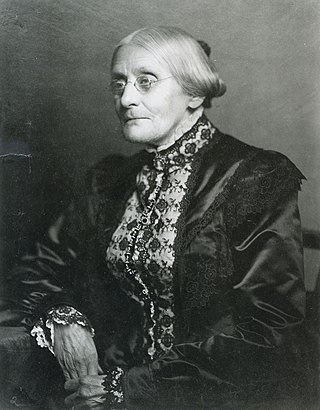
Susan B. Anthony was an American social reformer and women's rights activist who played a pivotal role in the women's suffrage movement. Born into a Quaker family committed to social equality, she collected anti-slavery petitions at the age of 17. In 1856, she became the New York state agent for the American Anti-Slavery Society.

Elizabeth Cady Stanton was an American writer and activist who was a leader of the women's rights movement in the U.S. during the mid- to late-19th century. She was the main force behind the 1848 Seneca Falls Convention, the first convention to be called for the sole purpose of discussing women's rights, and was the primary author of its Declaration of Sentiments. Her demand for women's right to vote generated a controversy at the convention but quickly became a central tenet of the women's movement. She was also active in other social reform activities, especially abolitionism.
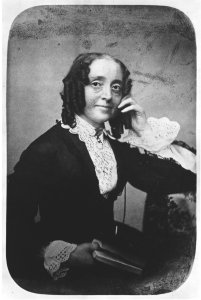
Ernestine Louise Rose was a suffragist, abolitionist, and freethinker who has been called the “first Jewish feminist.” Her career spanned from the 1830s to the 1870s, making her a contemporary to the more famous suffragists Elizabeth Cady Stanton and Susan B. Anthony. Largely forgotten in contemporary discussions of the American women's rights movement, she was one of its major intellectual forces in nineteenth-century America. The quote, "women's rights are human rights," was believed to be first coined by her. Her relationship with Judaism is a debated motivation for her advocacy. As a rabbi's daughter, Ernestine had received more education than other women her age. Although less well remembered than her fellow suffragists and abolitionists, in 1996, she was inducted into the National Women's Hall of Fame, and in 1998 the Ernestine Rose Society was founded to “revive the legacy of this important early nineteenth century reformer by recognizing her pioneering role in the first wave of feminism.”

Anna Howard Shaw was a leader of the women's suffrage movement in the United States. She was also a physician and one of the first women to be ordained as a Methodist minister in the United States.

Paulina Wright Davis was an American abolitionist, suffragist, and educator. She was one of the founders of the New England Woman Suffrage Association.

Martha Coffin Wright was an American feminist, abolitionist, and signatory of the Declaration of Sentiments who was a close friend and supporter of Harriet Tubman.

Abby Kelley Foster was an American abolitionist and radical social reformer active from the 1830s to 1870s. She became a fundraiser, lecturer and committee organizer for the influential American Anti-Slavery Society, where she worked closely with William Lloyd Garrison and other radicals. She married fellow abolitionist and lecturer Stephen Symonds Foster in 1845, and they both worked for equal rights for women and for Africans enslaved in the Americas.

The Mother of Us All is a two-act opera composed by Virgil Thomson to a libretto by Gertrude Stein. Thomson and Stein met in 1945 to begin the writing process, almost twenty years after their first collaborative project, the opera Four Saints in Three Acts. Stein wrote the libretto in the winter of 1945–46 before sending it to Thomson in March. After Stein's death in July, Thomson began working on the score, which he finished within just a few months. The opera centers around Susan B. Anthony, one of the major figures in the fight for women's suffrage in the United States, with a supporting cast of characters both fictional and based on other historical figures. Thomson famously described the work as a "pageant".

Amelia Jenks Bloomer was an American newspaper editor, women's rights and temperance advocate. Even though she did not create the women's clothing reform style known as bloomers, her name became associated with it because of her early and strong advocacy. In her work with The Lily, she became the first woman to own, operate and edit a newspaper for women.

Lucretia Mott was an American Quaker, abolitionist, women's rights activist, and social reformer. She had formed the idea of reforming the position of women in society when she was amongst the women excluded from the World Anti-Slavery Convention held in London in 1840. In 1848, she was invited by Jane Hunt to a meeting that led to the first public gathering about women's rights, the Seneca Falls Convention, during which the Declaration of Sentiments was written.
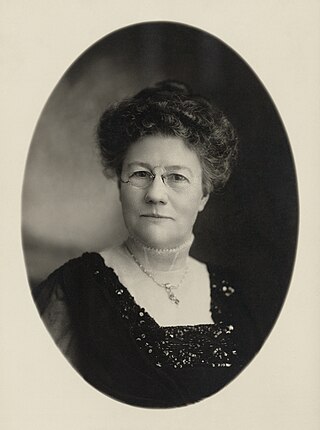
Ida Husted Harper was an American author, journalist, columnist, and suffragist, as well as the author of a three-volume biography of suffrage leader Susan B. Anthony at Anthony's request. Harper also co-edited and collaborated with Anthony on volume four (1902) of the six-volume History of Woman Suffrage and completed the project by solo writing volumes five and six (1922) after Anthony's death. In addition, Harper served as secretary of the Indiana chapter of the National Woman Suffrage Association, became a prominent figure in the women's suffrage movement in the U.S., and wrote columns on women's issues for numerous newspapers across the United States. Harper traveled extensively, delivered lectures in support of women's rights, handled press relations for a women's suffrage amendment in California, headed the National American Woman Suffrage Association's national press bureau in New York City and the editorial correspondence department of the Leslie Bureau of Suffrage Education in Washington, D.C., and chaired the press committee of the International Council of Women.

Julia Annie Archibald Holmes was an American suffragist, abolitionist, mountaineer and journalist. She was the first woman to climb Pikes Peak.

Sarah James Eddy was an American artist and photographer who specialized in the platinotype process, also known as platinum prints. She was active in abolition, reform, and suffragist movements, and was a philanthropist as well as instrumental in the founding of the Rhode Island Humane Society. She was inducted into the Rhode Island Heritage Hall of Fame in 2017.
Gladys Eloise Beckwith was an American academic and women's rights activist. She was the co-founder of the Michigan Women's Studies Association and the founder of the Michigan Women's Hall of Fame. Beckwith was one of the first professors of women's studies in the United States, teaching at Michigan State University. She was inducted into the Michigan Women's Hall of Fame in 2012 for her accomplishments in the fields of education and women's rights.
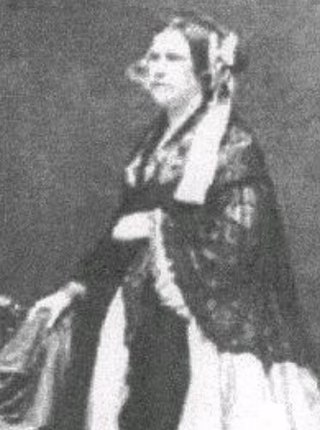
Eliza Seaman Leggett was an American suffragist and abolitionist.
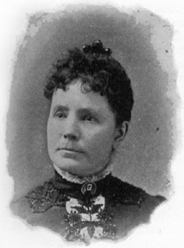
Emily Burton Ketcham was an American suffragist.
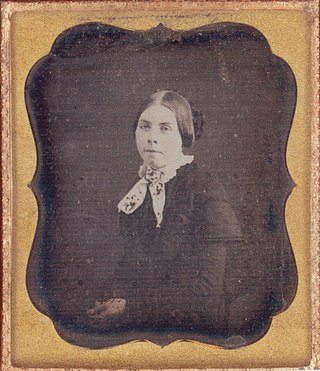
Helen Walker McAndrew was a Scottish-American doctor and the first documented female physician in Washtenaw County, Michigan. According to some sources, she was also the first female physician in the U.S. state of Michigan.
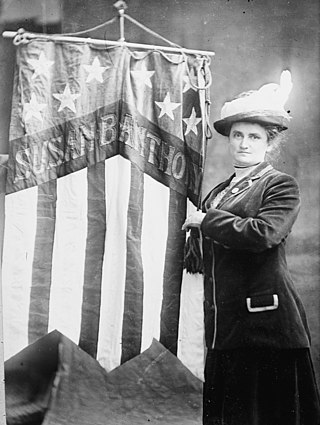
Lucy Elmina Anthony was an internationally known leader in the American woman's suffrage movement. She was the niece of American social reformer and women's rights activist, Susan B. Anthony, and longtime companion of women's suffrage leader, Anna Howard Shaw. She served as a secretary to both women, as well as on the committee on local arrangements for the National Woman Suffrage Association (NWSA)

Charlotte Wilson Jackson was an American artist and activist from Michigan. She was the first African American to attend the School of the Art Institute of Chicago. In 1901, Wilson oversaw the exhibition of African-American artists at the Pan-American Exposition.
Frances Ellen Burr was an American suffragist and writer from Connecticut.
References
- ↑ "Biographical Sketch of May Stocking Knaggs". Alexander Street Documents. Retrieved 2021-09-11.
- ↑ "May Stocking Knaggs" (PDF). Michigan Women's Hall of Fame.